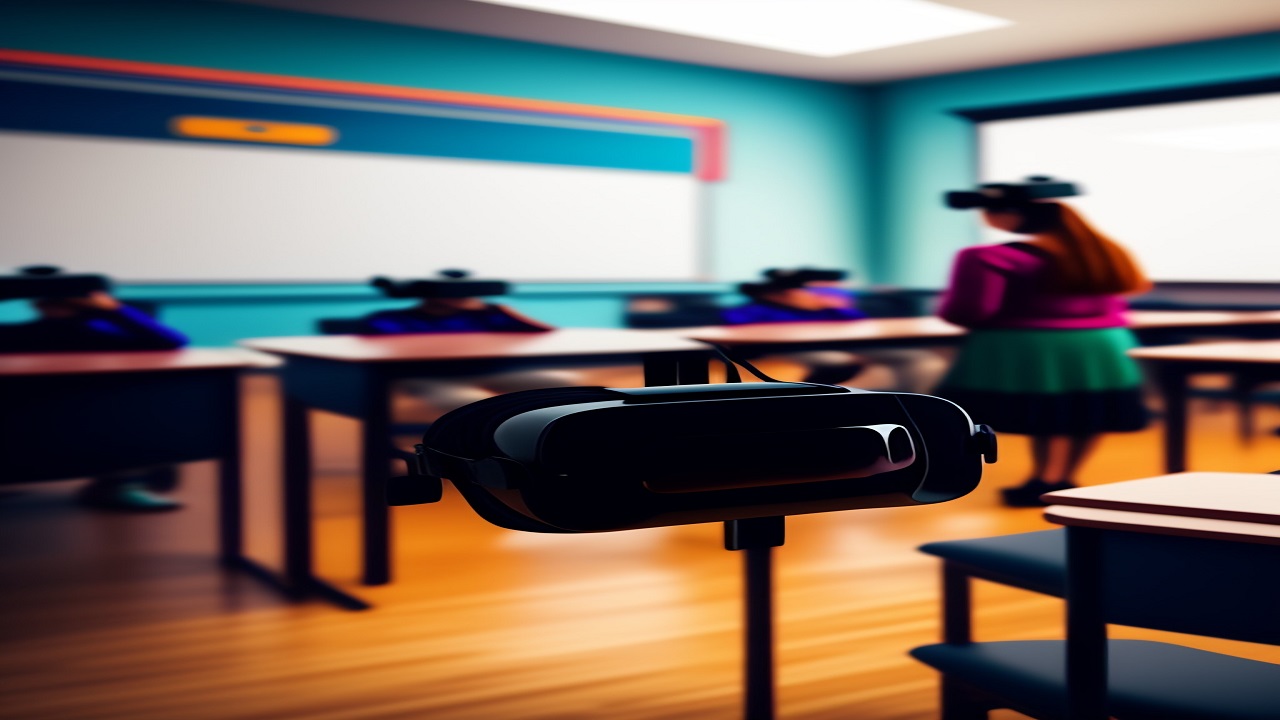The Classroom of the Future: Augmented Reality and Virtual Reality in Education
The blog discusses how augmented reality (AR) and virtual reality (VR) can revolutionize the education system by offering an immersive and engaging learning experience. AR and VR allow students to explore and interact with digital content in a three-dimensional space, making learning more fun and interactive. Additionally, these technologies can cater to different learning styles and enhance collaboration and teamwork in the classroom. However, implementing AR and VR requires a significant investment in technology and training for teachers. Despite the cost, the benefits of these technologies make it a worthwhile investment in the future of education.

The education system has come a long way over the years. From the blackboard and chalk to digital classrooms, technology has transformed the way we learn and teach. Today, with the advent of augmented reality (AR) and virtual reality (VR), we are witnessing a new era of education, one that offers immersive experiences and interactive learning.
The traditional classroom setup often entails a teacher lecturing students while they listen and take notes. This teaching method can be monotonous and fails to engage students effectively. However, with AR and VR, the classroom of the future offers a dynamic and immersive learning experience.
AR and VR are different technologies, but they share one thing in common: they allow students to explore and interact with digital content in a three-dimensional space. AR uses a device such as a smartphone or a tablet to overlay digital images or information onto the real world. On the other hand, VR creates a fully immersive digital environment that students can explore using a headset.
One of the key advantages of AR and VR in education is that they make learning fun and engaging. With AR, students can visualize complex concepts and see how they apply them in the real world. For instance, biology students can use AR to visualize the structure of cells or organs in the human body. Meanwhile, VR offers a fully immersive experience that allows students to explore historical landmarks or visit places that are impossible to access in real life.
AR and VR can also enhance collaboration and teamwork in the classroom. Students can work together on projects and assignments in a shared virtual space. For instance, a history class could create a virtual tour of a famous battlefield, and each student could contribute their research and ideas to the project.
Another advantage of AR and VR is that they can cater to different learning styles. Some students learn better through hands-on experience, while others prefer visual aids or auditory learning. With AR and VR, students can choose the learning method that suits them best.
However, implementing AR and VR in the classroom requires a significant investment in technology and training for teachers. It is crucial to ensure that students have access to the necessary devices and that teachers receive adequate training on how to integrate AR and VR into their lessons effectively.
In conclusion, the classroom of the future is here, and it offers a world of opportunities for both students and teachers. AR and VR can enhance the learning experience and provide immersive and engaging content. While implementing these technologies may require some investment, the benefits they offer make it a worthwhile investment in the future of education.
- READ MORE ON:
- Augmented Reality (AR)
- Virtual Reality (VR)
- Immersive Learning Experience
- Interactive Learning
- Three-Dimensional Space
- Fun and Engaging Learning
- Visualization of Complex Concepts
- Hands-on Experience
- Visual Aids
- Auditory Learning
- Collaboration and Teamwork
- Investment in Technology
- Future of Education










